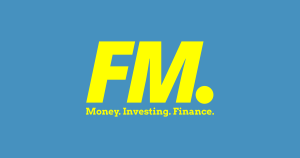Foreclosure is a legal process in which a lender takes back possession of a property from the borrower after the latter has failed to make payments on the loan. Foreclosure usually happens when borrowers don't have enough money to make their monthly mortgage payments, but it can also happen when they default on other types of loans, such as car loans or home equity lines of credit. In most cases, foreclosure proceedings are started by the lender after the borrower misses three or more consecutive payments. Let's explore this in detail.
What Is Foreclosure?
Foreclosure is the process of a lender taking back possession of a property from the borrower after the latter has failed to make payments on their loan. The foreclosure process usually starts when borrowers fall behind on their monthly mortgage payments but can also happen if they default on other types of loans such as car loans or home equity lines of credit. There are various options for avoiding foreclosure to keep in mind that will help you stay in your home. In most cases, lenders will start the foreclosure process after the borrower misses three or more consecutive payments. Once the foreclosure process begins, it can take a few months to a year for the lender to take possession of the property.
What Are The Different Types Of Foreclosure?
There are two main types of foreclosure: judicial and non-judicial.
- Judicial Foreclosure: This type of foreclosure is handled by a court. The lender must file a lawsuit against the borrower and obtain a court order to foreclose on the property. For example, if the borrower owes $100,000 on their loan and the property is worth $90,000, the court may order a foreclosure. However, if the borrower owes $100,000 on their loan and the property is worth $110,000, the court may not order a foreclosure.
- Non-judicial Foreclosure: This type of foreclosure does not involve a court. The lender can foreclose on the property without going through the legal process. For example, if the borrower has a deed of trust instead of a mortgage, the lender can foreclose on the property without going to court.
How Does Foreclosure Work?
The foreclosure process generally works like this:
- The borrower falls behind on their payments and the lender sends them a notice that they are in default.
- The lender then files a notice of sale with the court, which starts the foreclosure process.
- The borrower is given a certain amount of time to catch up on their payments (usually around 30 days). If they don't, the property is auctioned off to the highest bidder.
- The borrower is then evicted from the property and responsible for any unpaid balance on the loan.
What Is A Pre-Foreclosure?
A pre-foreclosure is a notice that the lender has filed with the court stating that the borrower has missed one or more payments and is in danger of being foreclosed on. The pre-foreclosure period gives the borrower an opportunity to catch up on their payments and avoid foreclosure. If the borrower doesn't make their payments during this time, the property will be auctioned off and they will be evicted. For example, if the borrower owes $100,000 on their loan and the property is worth $90,000, the lender may file a notice of sale with the court. This would start the foreclosure process and the borrower would have around 30 days to catch up on their payments. If they don't, the property will be auctioned off and they will be responsible for any unpaid balance on the loan.
What Happens After Foreclosure?
After foreclosure, the borrower is responsible for any unpaid balance on the loan. The lender may also pursue a deficiency judgment against the borrower if the property is sold for less than what is owed on the loan. For example, if the borrower owes $100,000 on their loan and the property is sold at auction for $90,000, the borrower would be responsible for the remaining $10,000. The lender may also report the foreclosure to the credit bureaus, which will damage the borrower's credit score. A foreclosure can have a major impact on your life, both in the short and long term. In the short term, you will lose your home and may have to move. You may also have difficulty renting or buying another property because of the foreclosure on your credit report. In the long term, a foreclosure can damage your credit score and make it difficult to get a loan in the future.
How Can I Avoid Foreclosure?
There are some ways you can avoid foreclosure. These include:
- Refinancing: This is when the borrower takes out a new loan to pay off their existing loan. This can be an option if the borrower has improved their credit score or income since taking out their original loan.
- Loan modification: This is when the terms of the loan are changed, such as the interest rate or monthly payment amount. This can be an option if the borrower is having difficulty making their monthly payments.
- Short sale: This is when the borrower sells their property for less than what is owed on the loan. The lender agrees to forgive the remaining balance of the loan. This can be an option if the borrower is unable to make their monthly payments and wants to avoid foreclosure.
- Deed in lieu of foreclosure: This is when the borrower gives the property back to the lender in exchange for the lender forgiving the remaining balance of the loan. This can be an option if the borrower is unable to make their monthly payments and wants to avoid foreclosure.
Foreclosure can be a stressful and difficult process, but there are options for avoiding it. If you're struggling to make your monthly payments, talk to your lender about your options. They may be willing to work with you to avoid foreclosure. So, at the end of the day, you'll be able to look back on this and know that you handled it in the best way possible. By considering your options and talking to your lender, you can avoid foreclosure and keep your home.














